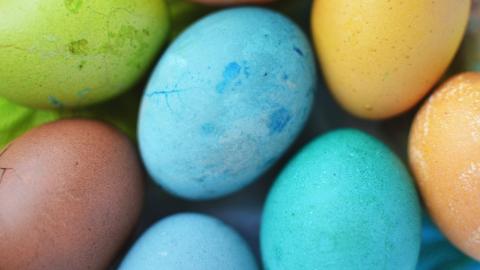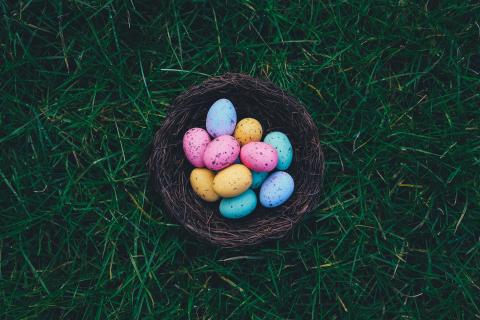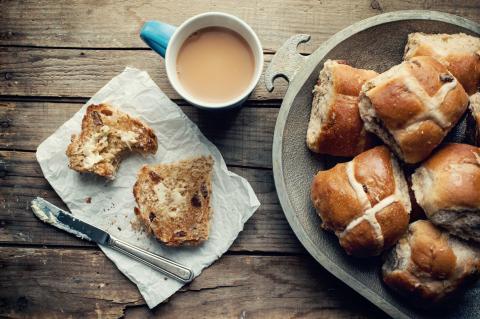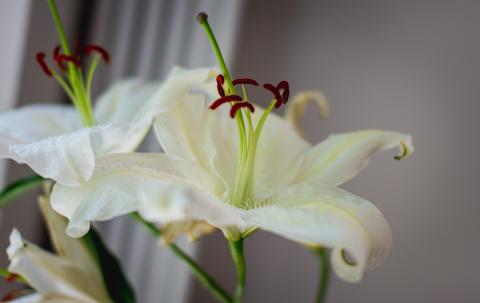Community Engagement, Global Mission
How to Use Easter Traditions to Connect With Your Neighbors

I was in a neighborhood meeting the other day in which we were brainstorming ideas for getting neighbors together in the next few months. One of our primary ideas was having an Easter egg hunt. One participant explained excitedly that she and her fiancé had just purchased bunny and chicken costumes for Easter. Another said they had a lot of plastic eggs that they would be happy to contribute … and so the plan developed.
Later my Jewish neighbor said, “I really have no idea what Easter is about. I know about Christmas but nothing about Easter. Passover starts on the Friday this year.”
Her comment made me think about our assumptions and about how every holiday has special symbols and traditions that remind us of the meaning of the celebration—but many people may have little sense of these connections even though they have been practiced for centuries. It also reminded me that it’s a great opportunity to share the gospel.
Easter certainly has its share of traditions: egg decorations and hunts, spring-themed gift baskets, chocolate bunnies, lilies, hats, and parades. Did you know that most of these traditions are rooted in the story of Jesus’ death and resurrection?
As we enjoy these traditions with our neighbors, maybe the Holy Spirit is giving us an opportunity to learn about our neighbor’s perspectives and experiences with Easter. Perhaps the Holy spirit is giving us an opportunity to discuss the connection between our Easter traditions and the good news of the gospel.

The Easter Egg
He is not here, but has risen.—Luke 24:5.
The egg is one of the oldest spring symbols in the world. The oval shape of the egg is the same shape as a raindrop and a seed, signs of spring and new life. It’s amazing to see a new living creature—a chick, lizard, or turtle—emerge alive and well from a seemingly dead object, an egg.
Jesus also emerged from the cold, dark tomb of death to life! So, the egg became a symbol of the rock tomb from which Christ arose.
Whether they are painted or made from chocolate on display or hidden by a bunny, eggs are a staple of Easter celebrations.
Action item for your neighborhood: Partner with some neighbors and have an Easter egg hunt in your neighborhood. Include opportunities for all ages to connect while the children are on the hunt!

The Easter Bunny
I came that they may have life, and have it abundantly.—John 10:12.
The Easter bunny also has a pre-Christian origin. Known for their rapid multiplication in the spring, rabbits served as a symbol of new life each year as winter melted away. In Egypt, people used to believe that the rabbit was responsible for the new life of spring. Because of its connection with new life, early Christians adopted the rabbit as a symbol for the resurrection of Christ, which also brings new life!
And the Easter bunny with a basket of eggs? According to an old German legend, a poor woman hid some brightly colored eggs in her garden as Easter treats for children. While the children were searching, a bunny hopped past. The children thought that the bunny had left the eggs. So every Easter, German children would make nests of leaves and branches in their gardens for the bunny.
Action item for your neighborhood: Make a nest-like basket for the Easter bunny and its eggs in your front yard. Sharing the story behind this tradition would be a great conversation starter with your neighbors.

Hot Cross Buns
I am the bread of life. Whoever comes to me will never be hungry, and whoever believes in me will never be thirsty. —John 6:35
In many historically Christian countries, hot cross buns are traditionally eaten hot or toasted on Good Friday. Each bun has an icing cross on its top as a symbol of the crucifixion. The empty cross came to symbolize not only Jesus’ suffering but also his resurrection and victory over death. In A.D. 325, Constantine at the Council of Nicea issued a decree that the cross would be the official symbol of Christianity.
Now hot cross buns go on sale in bakeries and grocery stores everywhere at the beginning of Lent and are served throughout the Easter season.
Action item for your neighborhood: Make and give some hot cross buns to your neighbors with an Easter greeting and an explanation. Better yet? Invite them over, make them together, and share them as English folklore claims that when there is "Half for you and half for me, between us two shall goodwill be!"

The Easter Lily
Consider the lilies, how they grow: they neither toil nor spin; yet I tell you, even Solomon in all his glory was not clothed like one of these. —Luke 12:27
History, mythology, poetry, and art often refer to the majestic beauty of these elegant white flowers. The Bible does numerous times as well.
Often called the "white-robed apostles of hope," it is said that lilies were found growing in the Garden of Gethsemane after Christ's agony. For many, the beautiful trumpet-shaped white flowers symbolize everything made right, hope, and new life. These are all important spiritual themes in the Easter account.
Action item for your neighborhood: Give Easter lilies to a neighbor as a gift. Drop the flowers off on their porch with a note sharing the history of the tradition, or share the story in person. Organize an Easter Lily fundraiser with some neighbors. Donate the funds to a local cause!
Karen Wilk is a Go Local Catalyzer with Resonate Global Mission. Learn more about sharing the gospel in your neighborhood. Join a Go Local cohort at www.resonateglobalmission.org/golocal
Community Engagement
Community Engagement, Ministry in Canada
Church Admin & Finance, Community Engagement
Connect to The Network and add your own question, blog, resource, or job.
Add Your Post
Let's Discuss
We love your comments! Thank you for helping us uphold the Community Guidelines to make this an encouraging and respectful community for everyone.